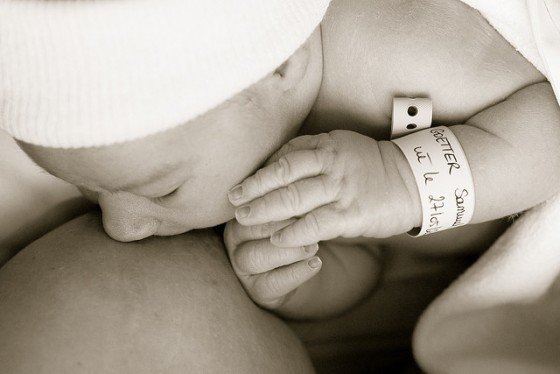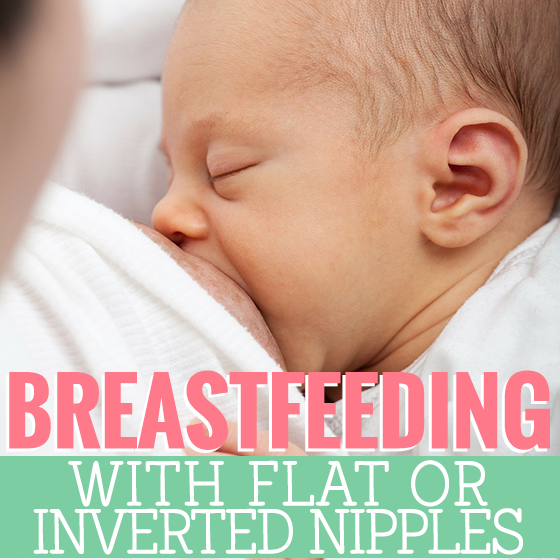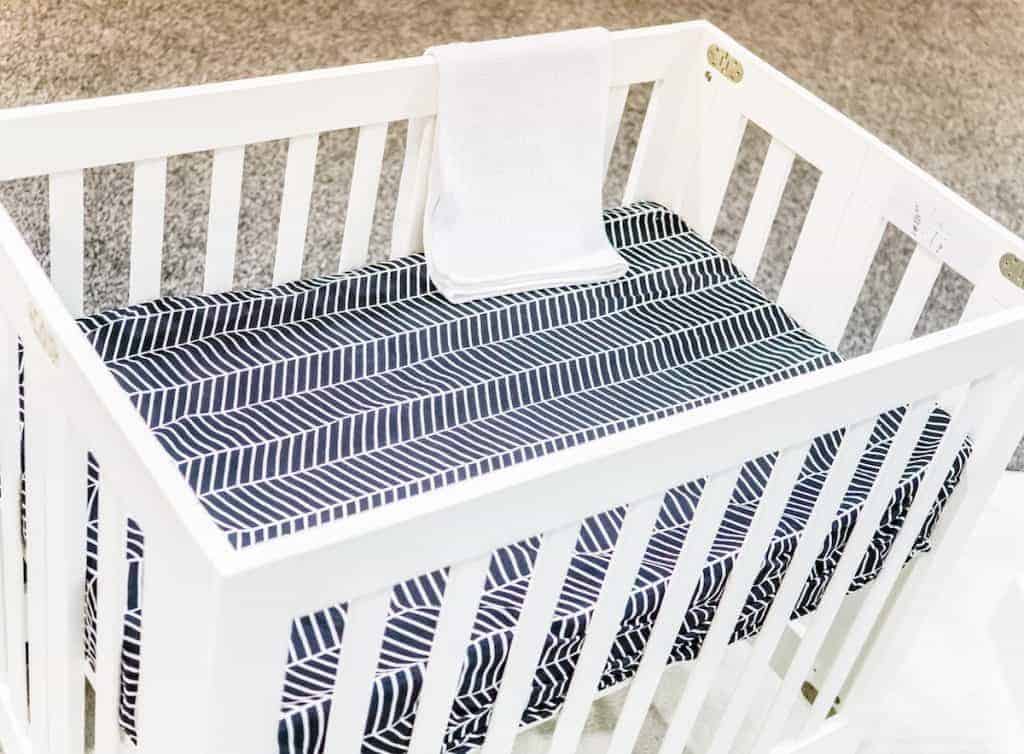The thought of breastfeeding to pregnant moms always comes with a bit of anxiety and fear of the unknown. That’s why there are so many books, articles, websites, and classes related to breastfeeding- to help moms-to-be become as prepared and educated as they can for baby’s first feeding. Now, add the normal stress and nerves on to a mom who has flat or inverted nipples, and imagine the challenges and doubts she may be feeling about being able to successfully breastfeed her baby with less than normal nipples.
We’re here to squash the myths about not being able to breastfeed with flat or inverted nipples and give you some tips and tricks to help you breastfeed as successfully as possible, no matter what your nipples look like!
FIRST, THE FACTS:
You probably already know if you have flat or inverted nipples, but for those who may still be wondering, here is the lowdown on the differences between these two nipple irregularities.
- Flat
- The nipple does not protrude and is level with the areola.
- Inverted
- The nipple does not protrude and is not level with the areola, but is retracted inward. What causes the retraction are adhesions at the base of the nipple that connect the skin to the underlying tissue.
A simple “pinch test” can help determine which nipple you truly have, as sometimes they can appear to be the same visually. Using your thumb and forefinger, gently but firmly press on the edge of your areola and see what your nipple does:
- A normal nipple will protrude.
- A flat nipple won’t do anything at all.
- An inverted nipple will retract or disappear.

Just as no two snowflakes are the same, no two nipples are the same. You could have a flat or inverted right nipple, but your left nipple be just fine. The severity of an inverted nipple can vary greatly as well. Everyone’s nipples are unique, and the good news is the majority of women can breastfeed just fine, even with nipple irregularities.
Breastfeeding problems tend to arise due to the same reasons moms with regular nipples encounter; baby is premature, too sleepy, has a bad latch, has medical issues, etc. Throw in a couple severely flat or inverted nipples, and you might have to call in some reinforcement.
WHAT TO DO:
There are a few differing opinions on if helping draw out inverted nipples prenatally is beneficial. It’s not 100% successful by any means, and can actually bring more attention to your nipples, making you feel extra nervous, negative, and inadequate about breastfeeding, which can mentally set you up for failure before baby is even here. Not to mention the studies that have shown moms who had prenatal nipple treatments were actually less successful at breastfeeding than those moms who didn’t do anything prenatally.
We think you should embrace and love your body no matter it’s shape or size, let your baby do the amazing work they were created to do, and then work through any issues you may encounter once or if you actually encounter them.
Although, it’s definitely helpful and recommended to meet with a lactation consultant beforehand to talk through any concerns, and have them on standby for after delivery.

- As soon as baby arrives, put them to the breast. An alert, healthy newborn who can latch on well usually is all you need for flat or inverted nipples. The vigorous force and sucking action can help loosen those adhesions, thus drawing the nipple out. Allow baby plenty of practice those first couple of days, and avoid bottles or pacifiers until baby can latch on well. Once your milk comes in and the dreaded engorgement happens, nipples tend to flatten out anyways, making it harder for baby to latch, so be sure they’re used to your breast/nipples before they change.
- If you start to run into any frustration, first call a lactation consultant. They are trained to help breastfeeding moms with flat or inverted nipples. They are a minefield of information, tips, tricks, and support to help you nurse successfully, even if your breasts are picture perfect!
- Try pumping right before feedings. The force exerted on your nipple that’s needed to draw it out may be more successful with a breast pump than your baby’s mouth at first. If time goes on and nursing is still difficult due to severely flat or inverted nipples, then consider pumping exclusively. Learn more about full-time pumping in Exclusively Pumping: Breastfeeding Through a Bottle.
- Before latching, cup your breast with your thumb on top and your fingers underneath and press your breast back against your chest wall while gently squeezing your breast and pressing your chest forward. This elongates the areola and forces your nipple to extend forward and protrude, making it easier for baby to latch on.
- Try using the football hold or the cross cradle hold breastfeeding positions which can be helpful for positioning yourself and baby while nursing with flat or inverted nipples.
- If you’re under the guidance of a lactation consultant, they may recommend trying nipple shields. These thin, flexible, silicone nipples fit over your nipple and areola and help act as an artificial nipple, making it easier for baby to latch on.
- If one nipple is normal and the other just isn’t working for you, then you may want to feed baby from the good breast and pump the other one, so you’re not lopsided. This is possible, just be sure to check in regularly with your pediatrician and lactation consultant to be sure baby is getting enough milk.

Whether baby latched on from the beginning with no problems or you had to try a few different techniques to find your groove, be warned that breastfeeding with flat or inverted nipples can be a bit painful. As your baby starts nursing around the clock, they are gently loosening those adhesions and giving your nipple more attention than it’s probably ever gotten, leading to soreness and tenderness.
Some inverted nipples will protrude during feedings, then retract afterwards, trapping moisture and increasing your risk for infection, increased pain, and cracks, so be sure to dry your nipples and use lanolin or protective nipple cream between feedings.
Over time, the pain should get better, but if it doesn’t subside or becomes worse, consult your doctor or lactation consultant.

We hope you feel more encouraged, supported, and educated if you plan on breastfeeding your baby with flat or inverted nipples. It can be done and has been done by millions of other women. You’re not alone, and kudos to you for wanting to provide your baby with the best nourishment nature intended!
LOOKING FOR UN-NURSING WEAR?

If you need to add some nursing clothing to your wardrobe, but don’t want to spend money on pieces you’ll only wear for a short period of time, then head on over to Melody Lane for the best in regular clothing that is versatile enough to wear before, during, and after breastfeeding! They offer trendy, classic, and comfortable clothing that is hand-picked for all the life stages women usually experience. With nothing over $100, always free shipping, and new styles featured every season, Melody Lane makes sure your “fashion meets life”.
Melody Lane | Facebook | Twitter | Pinterest | Instagram
Photo Credits: PIN IMAGE By Public Domain Pictures (CC0), Newborn By Raphael Goetter (CC BY 2.0),Dani
Sources: Johns Hopkins Medicine, Breastfeeding Basics, Ask Dr. Sears, Medscape









































